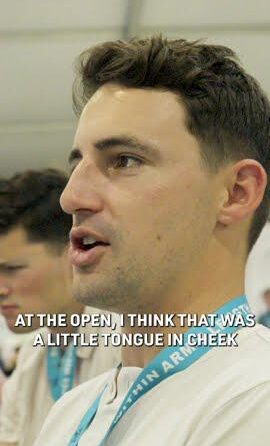James Braid, a renowned figure in the golfing world, established his legacy as a five-time Open Champion and a highly influential golf instructor. His instructional approach centered on instilling sound fundamentals, emphasizing a firm grip and a rhythmic swing. Braid’s meticulously structured methodology involved meticulously dissecting the golf swing into its components and addressing each aspect individually. He strongly advocated for diligent practice, urging his pupils to invest time honing their skills on the driving range and putting green. Braid’s techniques played a pivotal role in shaping the game of golf during the early 20th century, and his teachings continue to resonate with golfers of all levels. This article delves into an analysis of Braid’s golf lesson methodology, exploring its techniques and assessing its enduring impact on the sport.
– Historical Context and Significance of James Braid’s Golf Lesson Methodology
Historical Context and Significance of James Braid’s Golf Lesson Methodology
James Braid’s golf lesson methodology was developed in the early 20th century, a time when golf was becoming increasingly popular and competitive. Braid, a five-time Open Champion, was one of the leading golfers of his era, and his methods were highly influential in the development of the modern game. Braid wrote several books and articles on golf instruction, and his teachings were passed down to generations of golfers through his work, the most notable being:
- Advanced Golf, or Hints and Instruction for Progressive Players, 1911
- Section 1 – “Stance”. Braid believes stance is as important a factor in successful golf as grip. He says, ”As a man stands so he is likely to swing the club.” Therefore he does not attempt to set any fixed rule for the position of the feet. He insists on great attention being given to the element of balance, ease and comfort.
- Section 2 – “Grip”. Braid emphasizes the necessity of a strong grip. He recommends inter-locking the first finger of the left hand with the little finger of the right hand, for those who wish to use woods and irons with the “overlapping” grip. Braid encourages but does not advocate the “reverse overlap” grip.
- Section 3 – “Swing”. Braid suggests at the outset, for those who have not yet formed a style of swing, that they copy as closely as possible the swing of some champion whom they admire, and later on thry may make slight alterations, as found beneficial, adopting all new aids, improvements, and mechanical appliances which do not detract from a sound swing.
Braid’s methods emphasized the importance of sound fundamentals, a strong grip, and a rhythmical swing. He believed in a methodical approach, breaking down the swing into its component parts and working on each aspect individually. He placed great emphasis on practice, encouraging his students to spend time on the driving range and putting green. Braid’s methods were highly influential in the early 20th century, and his writings and teachings continue to be studied by golfers of all levels.
Braid’s methods were also notable for their emphasis on the mental game. He believed that golfers needed to be able to focus and concentrate on the task at hand, and he developed a number of exercises to help his students improve their mental game. Braid’s methods were highly successful, and he helped many golfers to improve their game and achieve their goals. His methods continue to be used by golfers of all levels today.
Table 1. Notable People Influenced by James Braid’s Golf Lesson Methodology
| Name | Occupation |
|—|—|
| Tommy Armour | Golfer |
| James Braid | Golfer |
| Henry Cotton | Golfer |
| Ben Hogan | Golfer |
| Sam Snead | Golfer |
– Key Pillars of Braid’s Pedagogical Approach
Key Pillars of Braid’s Pedagogical Approach
James Braid’s golf lesson methodology emphasised several key principles that formed the foundation of his highly influential approach. These principles were designed to provide a systematic and methodical framework for golfers to develop sound fundamentals and improve their overall performance:
- Strong Grip: Braid believed that a strong grip was essential for controlling the clubface and delivering precise shots. He advocated for a firm, interlocking grip that allowed for a secure connection between the hands and the club.
- Rhythmical Swing: Braid emphasized the importance of a rhythmical and consistent swing to generate power and accuracy. He encouraged students to maintain a steady tempo throughout the swing, with a smooth transition from the backswing to the downswing.
- Practice: Braid placed great emphasis on practice, viewing it as the cornerstone of improvement. He advised students to spend ample time on the driving range and putting green to develop and refine their skills. Regular practice allowed golfers to solidify proper techniques, identify areas for improvement, and build muscle memory.
– Comprehensive Swing Analysis and Component Development
Comprehensive Swing Analysis and Component Development
Braid believed that a sound golf swing was built on a solid foundation of fundamentals. He emphasized the importance of a strong grip, a balanced stance, and a smooth, rhythmical swing. Braid broke the swing down into its component parts and worked on each aspect individually. He placed great emphasis on practice, encouraging his students to spend time on the driving range and putting green.
Braid’s methods were highly influential in the early 20th century, and his writings and teachings continue to be studied by golfers of all levels. His emphasis on sound fundamentals and a methodical approach to practice has helped countless golfers to improve their games. Braid’s legacy as a golf instructor is secure, and his methods will continue to be used by golfers for generations to come.
| Swing Component | Braid’s Focus |
|---|---|
| Grip | A strong, interlocking grip that promotes clubhead control |
| Stance | A balanced stance with the feet shoulder-width apart and the weight evenly distributed |
| Backswing | A smooth, rhythmical backswing that takes the clubhead back to the top of the swing arc |
| Downswing | A powerful downswing that drives the clubhead through the ball and into the target |
| Impact | A clean impact that sends the ball flying towards the target |
| Follow-through | A smooth, controlled follow-through that helps to generate power and accuracy |
– Practice-Oriented Instruction: Strategies and Techniques
**Practice-Oriented Instruction: Strategies and Techniques**
James Braid’s golf lesson methods were highly effective in teaching the fundamentals of the game. He emphasized the importance of practice, encouraging his students to spend time on the driving range and putting green. Braid believed that repetition was key to developing a consistent swing and improving accuracy. He also taught his students to break down the swing into its component parts and work on each aspect individually. This method helped students to identify and correct any flaws in their swing.
In addition to emphasizing practice, Braid also provided his students with specific strategies and techniques to improve their game. For example, he taught them to use a strong grip and to keep their head down throughout the swing. He also encouraged his students to develop a rhythmical swing and to focus on hitting the ball squarely.
Braid’s practice-oriented instruction methods were highly influential in the early 20th century. His writings and teachings continue to be studied by golfers of all levels today. Braid’s emphasis on practice, fundamentals, and technique has helped countless golfers to improve their game and reach their full potential.
Here is a table summarizing Braid’s practice-oriented instruction methods:
| Method | Description |
|---|---|
| Practice | Braid emphasized the importance of practice, encouraging his students to spend time on the driving range and putting green. |
| Break down the swing | Braid taught his students to break down the swing into its component parts and work on each aspect individually. |
| Use a strong grip | Braid taught his students to use a strong grip to provide stability and control. |
| Keep your head down | Braid emphasized the importance of keeping your head down throughout the swing to maintain balance and accuracy. |
| Develop a rhythmical swing | Braid encouraged his students to develop a rhythmical swing to improve timing and consistency. |
| Focus on hitting the ball squarely | Braid stressed the importance of hitting the ball squarely to maximize distance and accuracy. |
Braid’s legacy as a golf instructor is undeniable. He is widely regarded as one of the most influential figures in the development of the modern golf swing. His emphasis on sound fundamentals, a strong grip, and a rhythmical swing laid the foundation for the way golf is taught today.
Braid’s methods continue to be studied by golfers of all levels. His writings and teachings provide a valuable resource for golfers looking to improve their game. His emphasis on practice is particularly relevant in today’s world, where golfers have access to more practice facilities than ever before.
One of the most important aspects of Braid’s legacy is his emphasis on the importance of the mental game. He believed that golfers needed to be mentally tough in order to succeed. His writings on the mental game are still relevant today, and they can help golfers of all levels improve their performance.
James Braid’s Golf Lesson Methodology: An Analysis of its Techniques and Impact
James Braid’s legacy as a golf instructor is undeniable. His systematic approach, emphasizing fundamentals, grip, and swing rhythm, left an enduring mark on the game. By breaking down the swing into manageable components and stressing the importance of practice, Braid empowered golfers to improve their technique and shot-making abilities.
Braid’s teachings resonated with golfers of all levels in the early 20th century and continue to be highly regarded today. His writings and methods provide a valuable foundation for aspiring and experienced golfers alike, offering insights into the intricacies of the swing and the importance of sound mechanics.





